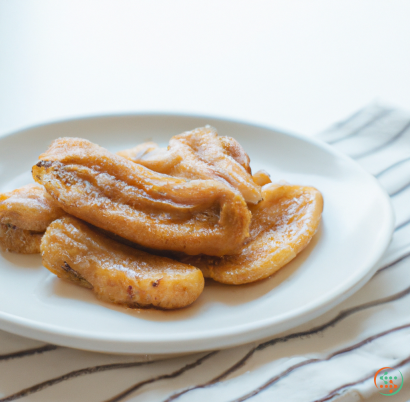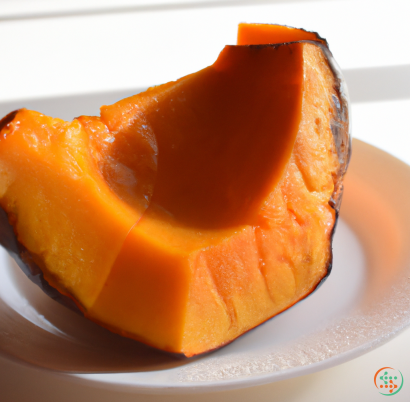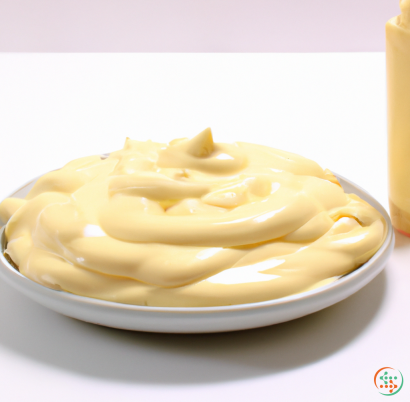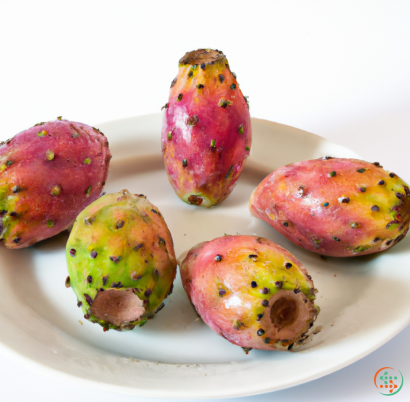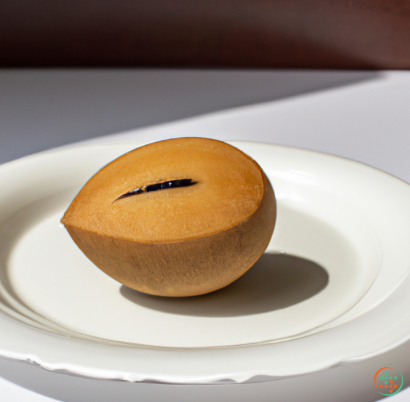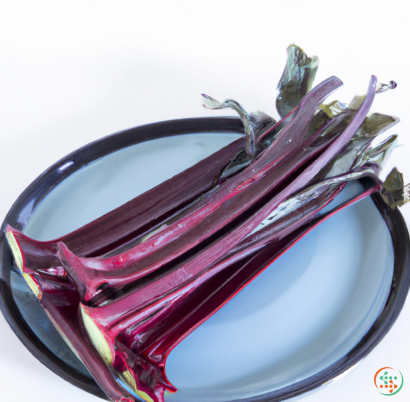Mamey Sapote
What is a Mamey Sapote?
Mamey sapote (Pouteria sapota) is an extraordinarily versatile tropical fruit that has been cultivated in Latin America, the Caribbean, and Central America since the days of the Aztecs. It looks quite dramatic when ripe, with its red-orange skin and bright pink flesh, yet it is no surprise as to why it is so beloved by people who have grown up with it in their diets. Mamey sapote is incredibly sweet and juicy, with a lightly spiced flavor that can be likened to almond, apricot and pumpkin custard, or the combination of marzipan and banana.
The Mamey Sapote tree can reach a height of 40 meters and is primarily grown in the Dominican Republic, Mexico, Puerto Rico, and throughout the Caribbean. It is most popularly used in desserts or eaten fresh, but is also canned or frozen for longer shelf life. The seeds have also been used to extract oil for cooking. Despite its delectable flavor, the Mamey Sapote is also exceedingly nutritious and is abundant with essential vitamins and minerals, including Vitamin A and C, iron, and calcium, making it invaluable in many traditional diets.
A mature Mamey Sapote tree can yield over 15 to 20 edible fruits each year, with each fruit typically weighing from 2 to 5 lbs. The fruit matures from late summer to early winter when it is harvested and can then reach maturity in 4 to 8 weeks if stored properly. Once ripe, the fruit will easily yield to finger pressure and can be peeled by peeling away its tough skin, revealing the smooth, pale orange flesh beneath.
Mamey Sapote has a unique flavor that some compare to prunes, cinnamon, or cherries. This smooth, creamy texture allows it to be used in all types of dishes, from savory to sweet. It is also an important base ingredient in traditional and modern drinks, such as milkshakes, smoothies, and fruit cocktails. For those looking to take advantage of the nutrition packed into one fruit, Mamey Sapote can be the perfect addition to extend meals and snacks.
The most popular way to eat Mamey Sapote is raw, right off the tree. If stored properly, it can be kept for up to 3 weeks at room temperature or up to 6 months in the refrigerator. Frozen, it can last for up to 1 year. Nutritional content is highest when eaten raw, as heat can destroy certain vitamins and minerals in the fruit.
In Central America and the Caribbean, Mamey Sapote is traditionally served as a syrup for ice cream, ices and other desserts, but can also be boiled and served sweetened as a side dish, boiled and mashed as an ingredient for dips, or pureed and mixed with crushed ginger candy for a popular cold drink. In Mexico it is blended into milkshakes known as "mamimel” and is often seen in popular Mexican Mole dishes as well. Mamey Sapote is also a key ingredient in several jams, jellies and sauces, and its powdered version is used to make sweetened desserts such as flan.
When buying Mamey Sapote, opt for fruits that are firm to the touch, with the bright orange skin. Any blemishes or dark spots on the skin indicate damage, so avoid these. It is also wise to purchase fruits that are larger, as they are more established and contain more flavor. Finally, store fruits in a cool and dry place away from direct sunlight.
In conclusion, the Mamey Sapote is an incredibly versatile and nutritious fruit that has been enjoyed for centuries in Latin America, the Caribbean, and Central America. Its sweet and fragrant flavor combined with its nutritive value make it a great choice as an ingredient in both sweet and savory recipes, while its rich color and texture make it an impressive presentation option. Whether you decide to try a Mamey Sapote Jam or a milkshake, this unique and delicious tropical super fruit is sure to delight your taste buds!
Mamey Sapote: From Tree to Dinner Plate
Most of us have likely enjoyed the fruity flavor of Mamey sapote without knowing the entire journey from tree to dinner plate. It may come as a surprise, but the journey is actually quite complex and captivating. By walking through the process, we can gain a greater appreciation of what goes into our food production and the wonderful taste of this tropical-native treat.
What is a Mamey Sapote?
Mamey sapote (Pouteria sapota) is a tropical fruit native to Central America and Mexico. It is a member of the Sapotaceae family, which has more than 600 species scattered across the tropics. Mamey sapote trees begin bearing fruit after two to three years, but peak productivity is reached at 10 to 12 years. The fruit itself is large and round, with a brown, textured peel. Inside, its orange-colored flesh is creamy with a delicious, almond-like flavor.
The Life Cycle of a Mamey Sapote
The process of bringing a delicious Mamey sapote to a dinner table starts with pollination. Unlike many fruits, Mamey sapote does not require cross-pollination; it is self-pollinating and therefore does not rely on another flower for cross-fertilization. However, pollination can still occur if bees or other insects accidentally carry pollen from other flowers to the Mamey sapote tree, resulting in a hybrid variety.
Once pollination is complete, the Mamey sapote tree needs proper irrigation and fertilizer applications to ensure healthy growth. The flowers will eventually form small, green fruit, which will gradually grow in size over the course of several months. During this time, growers will carefully monitor the fruits for signs of disease and pests, applying necessary treatments to protect the fruits.
Once the Mamey sapote fruits have reached their optimal size and color, the tree is ready for harvest. Depending on climate and region, the harvest season for Mamey sapote can take place from April to October. During the harvest, growers use ladders or dangling ropes to reach the uppermost parts of the tree and pick the ripe fruits. The fruits are then placed in reinforced baskets and carefully loaded into trucks for transport to market.
Post-Harvesting Considerations
Once the Mamey sapote fruits have been harvested, it is important to store them properly in order to maintain their quality and maximize shelf life. The right temperature is usually between 52 and 59 degrees Fahrenheit, although some varieties may require different temperatures.
In order to prevent premature ripening and decay, the fruits should be stored in a humid atmosphere. To achieve this, the fruits can be placed in plastic bags with a few drops of water and sealed shut. Alternatively, the fruits can also be placed in a bucket of water and covered with a damp cloth. This method of storage will ensure that the fruits remain fresh until they are ready to be transported to supermarkets or sold directly to consumers.
Transportation to Market
Mamey sapote fruits have a long shelf life and can easily be stored for several weeks. Once harvested, the fruits are packed in cardboard boxes or wooden crates and loaded onto trucks. To prevent the growth of mold and decay, the fruits must be stored at the proper temperature, which is typically below 55 degrees Fahrenheit. During the transportation process, the fruits should also be monitored closely to ensure that they stay at the right temperature and humidity.
When the truck arrives at the market, the Mamey sapote fruits are then unloaded and moved to the store’s cold storage unit. At this stage, the fruits must be closely monitored so that they don’t spoil before they reach the dinner plate.
From Store to Dinner Plate
When the Mamey sapote fruits arrive at the store, they are usually sold either as whole fruits or pre-cut into halves or quarters. Whole fruits should be inspected to ensure that they are free from blemishes, bruises and decay. Fruits that have reached an advanced degree of ripeness are also risky, as they can quickly spoil.
To ensure that the Mamey sapote reaches the dinner plate in the best possible condition, shoppers should avoid buying fruits that are overly soft and ripening. The ideal fruit will have a slightly soft texture, but it should not be too soft or mushy.
Once the Mamey sapote has been purchased, the next step is to cut and prepare the fruit for eating. For whole fruits, the process involves carefully cutting the fruit in half and removing the thin cream-colored skin. The flesh of the fruit can then be scooped out with a spoon. For pre-cut fruits, the process is slightly simpler, but the flesh should still be removed carefully in order to avoid bruising. Finally, the Mamey sapote can be eaten plain or used in various recipes.
Conclusion
The journey of a Mamey sapote from tree to dinner plate is an intriguing one that highlights the complexities of food production and the hard work of trekking through the tropics in search of these sweet delights. Each step of the process – from harvesting to transport to the store – requires careful monitoring and management in order to ensure that the fruits are of the highest quality and have the longest possible shelf life. Fortunately, with proper care, the delicious Mamey sapote can bring joy to fruit-lovers everywhere.
| Vitamin A | 0.007 mg | |
| Beta-Carotene | 0.082 mg | |
| Vitamin E | 0.00211 grams | |
| Vitamin C | 0.023 grams | |
| Vitamin B1 | 0.01 mg | |
| Vitamin B2 | 0.12 mg | |
| Vitamin B3 | 0.00143 grams | |
| Vitamin B5 | 0.4 mg | |
| Vitamin B6 | 0.72 mg | |
| Vitamin B9 | 0.007 mg |
| Calcium | 0.018 grams |
Daily Value 1.3 g
|
| Iron | 0.78 mg |
Daily Value 0.018 g
|
| Magnesium | 0.011 grams |
Daily Value 0.4 g
|
| Phosphorus | 0.026 grams |
Daily Value 1.25 g
|
| Potassium | 0.454 grams |
Daily Value 4.7 g
|
| Sodium | 0.007 grams |
Daily Value 2.3 g
|
| Zinc | 0.19 mg |
Daily Value 0.011 g
|
| Copper | 0.21 mg |
Daily Value 0.9 mg
|
| Manganese | 0.2 mg |
Daily Value 0.0023 g
|
| Tryptophan | 0.049 grams | |
| Threonine | 0.085 grams | |
| Isoleucine | 0.061 grams | |
| Leucine | 0.073 grams | |
| Lysine | 0.073 grams | |
| Methionine | 0.024 grams | |
| Cystine | 0.012 grams | |
| Phenylalanine | 0.061 grams | |
| Tyrosine | 0.049 grams | |
| Valine | 0.073 grams | |
| Arginine | 0.049 grams | |
| Histidine | 0.049 grams | |
| Alanine | 0.073 grams | |
| Aspartic Acid | 0.147 grams | |
| Glutamic Acid | 0.147 grams | |
| Glycine | 0.073 grams | |
| Proline | 0.085 grams | |
| Serine | 0.195 grams |
| Glucose | 8.01 grams |
|
| Fructose | 7.66 grams |
|
| Sucrose | 4.09 grams |
|
| Maltose | 0.38 grams |
|
| Total Sugars | 20.1 grams |
per 100g
|
| Capric acid (10:0) | 0.02 grams |
|
| Lauric acid (12:0) | 0.01 grams |
|
| Myristic acid (14:0) | 0.01 grams |
|
| Palmitic acid (16:0) | 0.1 grams |
|
| Stearic acid (18:0) | 0.02 grams |
|
| Total Saturated fatty acids: | 0.16 g | |
| Oleic acid (18:1) | 0.1 grams |
|
| Total Monounsaturated fatty acids: | 0.1 g | |
| Omega-3 Alpha-linolenic acid (18:3) | 0.08 grams |
|
| Linolenic acid (18:3) | 0.08 grams |
|
| Linoleic acid (18:2) | 0.01 grams |
|
| Total Polyunsaturated fatty acids: | 0.17 g | |

